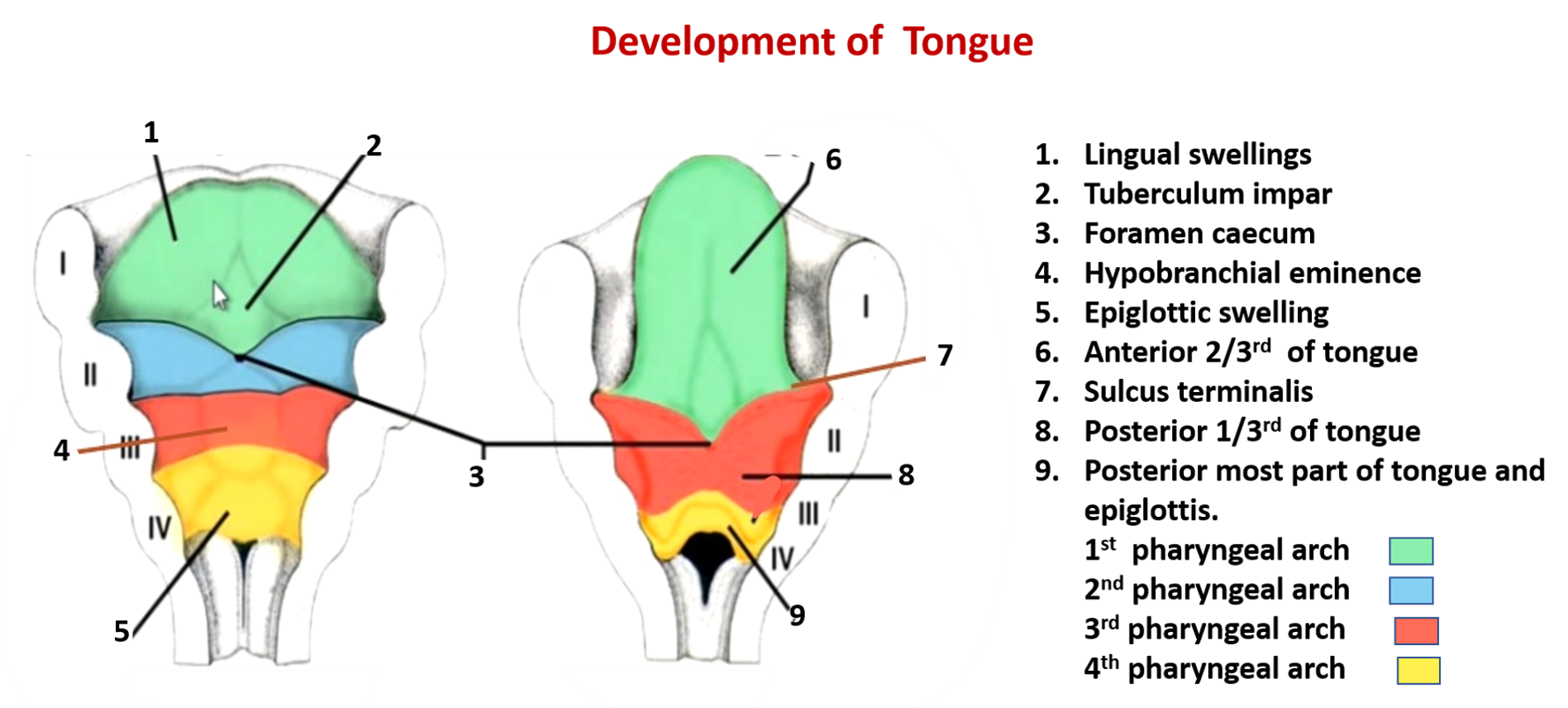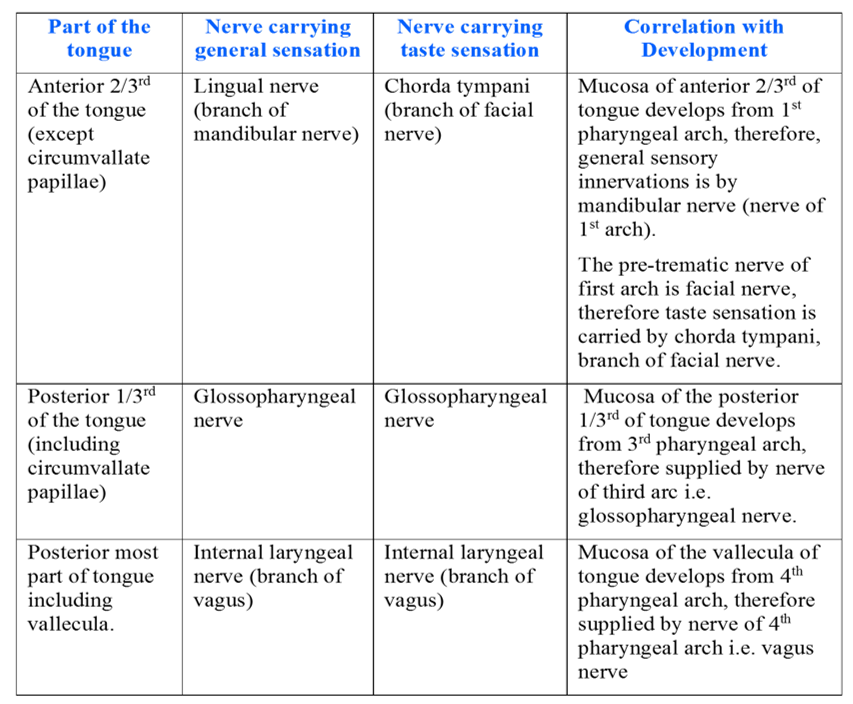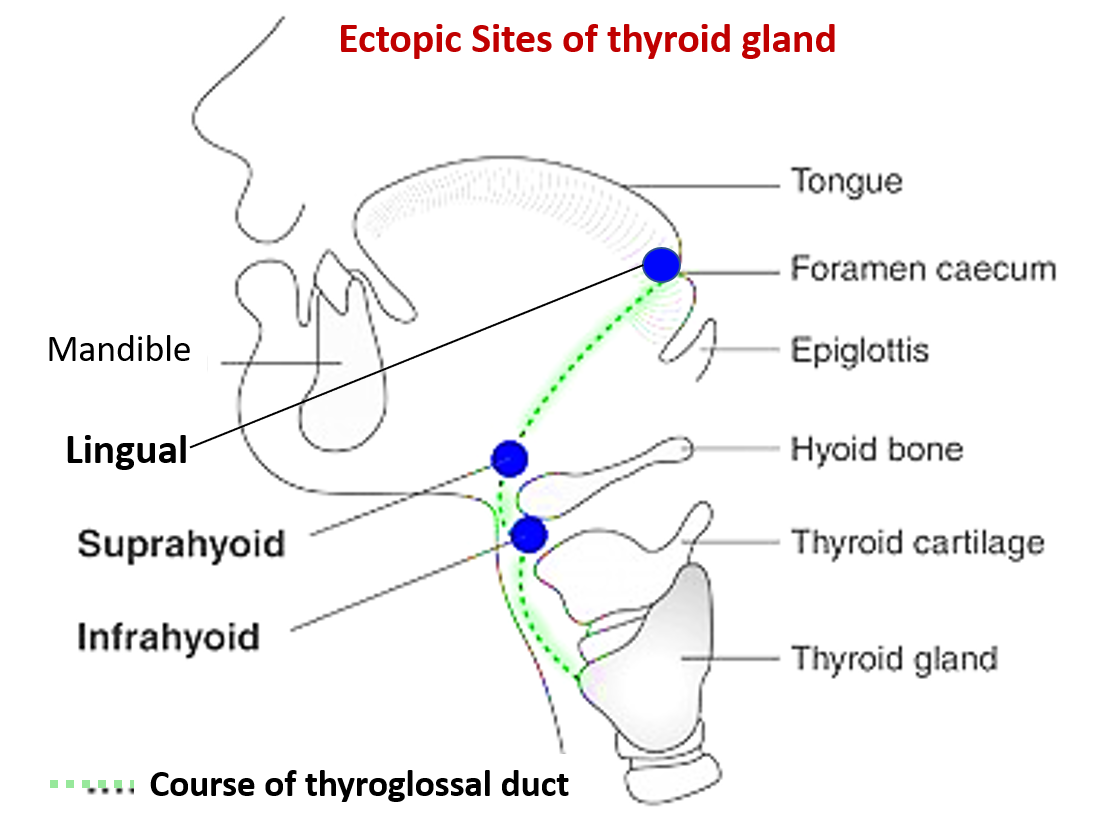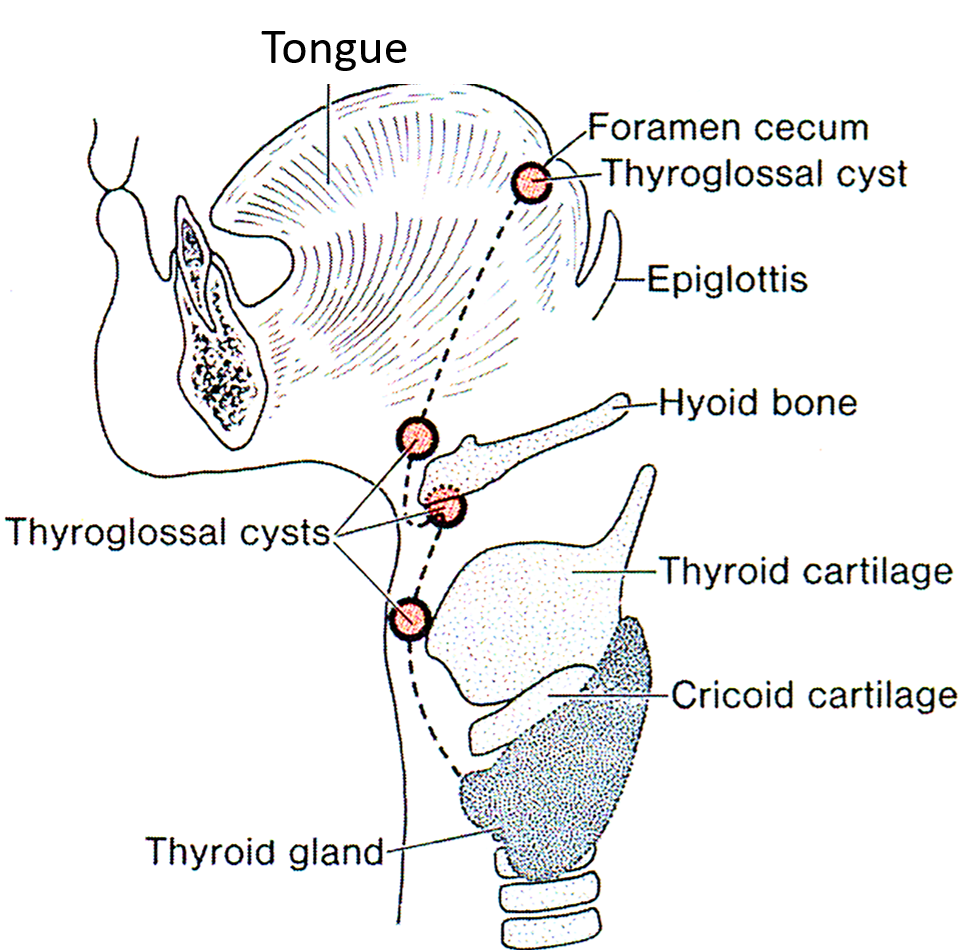Development of Tongue and Thyroid Gland
Q. Identify the structures labeled 1-9.

Q. Name the embryological structures that give rise to tongue and correlate the development with the sensory nerve supply.

Q. Which embryological structure/s that forms muscles of tongue?
A. Muscles of tongue are derived from occipital myotomes and they are supplied by hypoglossal nerve.
Q. Does 2nd pharyngeal arch contribute to the formation of tongue?
A. No, the 2nd arch mesoderm gets buried below the surface and the third arch mesoderm grows over it to fuse with the mesoderm of 1st pharyngeal arch.
Q. How does thyroid gland develop?
A. Thyroid gland develops
- from a midline endodermal diverticulum just behind the tuberculum impar. In adults this region is seen as a depression called ‘foramen caecum’.
- the diverticulum grows downwardsin the neck and is known as thyroglossal duct.
- the tip of throglossal duct bifurcates and the proliferation of cells of this bifid end gives rise to two thyroid lobes.
- parafollicular cells are derived from the ultimobrancheal body of pharngeal complex.

Q. What are the different ectopic sites of thyroid gland?
A. These can be anywhere between tongue and its normal position.duct :
- Lingual thyroid: under the mucosa of dorsum of tongue.
- Suprahyoid thyroid: In the midline of neck , above the hyoid bone
- Infrahyoid thyroid: below the hyoid bone but above its normal position.

Q. What are thyroglossal cysts and where may they be located?
A. Thyroglossal cysts are remnants of thyroglossal duct. They may occur anywhere along the course of descent of thyroglossal duct as seen in the diagram below:

